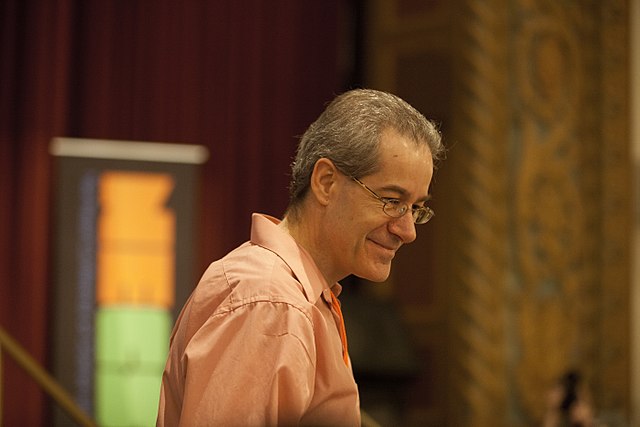Extended evolutionary synthesis
The Extended Evolutionary Synthesis (EES) consists of a set of theoretical concepts argued to be more comprehensive than the earlier modern synthesis of evolutionary biology that took place between 1918 and 1942. The extended evolutionary synthesis was called for in the 1950s by C. H. Waddington, argued for on the basis of punctuated equilibrium by Stephen Jay Gould and Niles Eldredge in the 1980s, and was reconceptualized in 2007 by Massimo Pigliucci and Gerd B. Müller.
Massimo Pigliucci, a leading proponent of the extended evolutionary synthesis in its 2007 form
Modern synthesis (20th century)
The modern synthesis was the early 20th-century synthesis of Charles Darwin's theory of evolution and Gregor Mendel's ideas on heredity into a joint mathematical framework. Julian Huxley coined the term in his 1942 book, Evolution: The Modern Synthesis. The synthesis combined the ideas of natural selection, Mendelian genetics, and population genetics. It also related the broad-scale macroevolution seen by palaeontologists to the small-scale microevolution of local populations.
William Bateson championed Mendelism.
Karl Pearson led the biometric school.
E. B. Ford studied polymorphism in the scarlet tiger moth for many years.
Julian Huxley presented a serious but popularising version of the theory in his 1942 book Evolution: The Modern Synthesis.





